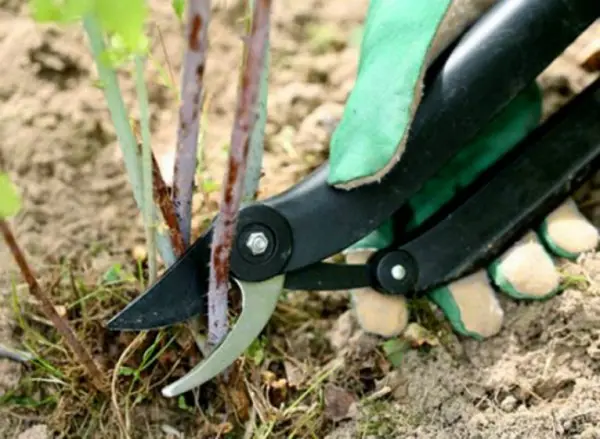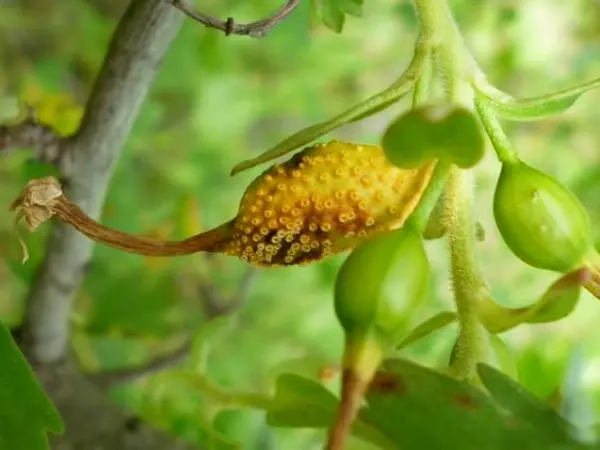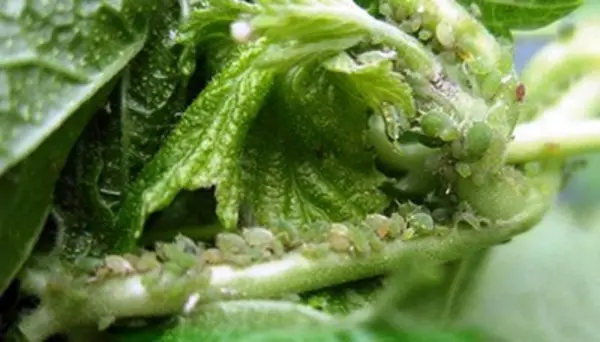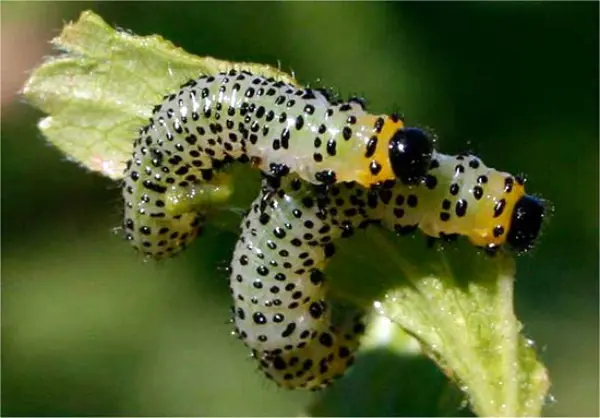Contents
At least one gooseberry bush can be found in almost every country house. Many grow this sour or sweet and sour berry and make delicious desserts out of it. But the most beneficial is the use of fresh berries. They saturate our body with vitamins, sugars, useful acids, pectin, potassium, iron and phosphorus. Gooseberries help fight atherosclerosis, cardiovascular diseases, make our blood vessels elastic, remove bad cholesterol from the body, drive bile and stabilize the intestines. Yes, that’s the trouble – sometimes it stops bearing fruit. When and why does this happen?
Causes of a bad harvest
Gooseberry is a very resistant and tenacious perennial shrub, it is not afraid of frost, is not too picky about the composition of the soil, and regularly bears fruit for 15–20 years. An adult bush brings about 15 kg of berries annually. The first fruits can be obtained 2 or 3 years after planting, and we can talk about a full-fledged harvest only for 4–5 years. But sometimes summer residents say that the gooseberry has ceased to bear fruit. It happens that the bush grows vigorous and green, even blooms, but either there are no berries at all, or few ovaries appear that fall off without growing. There may be several reasons for this.

Gooseberries love a sunny place, the shade helps to reduce the yield. When water stagnates in the region of the root system, this also negatively affects the number of berries and the health of the entire bush. If after a few years it turned out that the bush was planted in an unsuitable place for it, then you need to dig it up, cut the edges of the roots and transplant it. It is advisable to think over and prepare the conditions in advance – transplants delay the harvest. After planting in a new bright place in the prepared soil, the bush must be cut off, not only cut out the oldest branches, but also shorten all shoots by a third. 4 years after transplantation (or earlier), it will be possible to get a full harvest of tasty and healthy berries.
Incorrect or simply insufficient pruning of the bush leads to its excessive thickening. The branches shade each other, do not allow new shoots to fully develop. Berries grow on young branches. From the 2nd to the 5th year, they form the most, and then the number decreases catastrophically. That’s why you need to remove branches older than 5 years annually.

Pruning is usually done in early spring before the buds open, or in the fall when the leaves have already fallen. The first 4 or 5 years, pruning is aimed at forming a bush, removing excess shoots growing from the root. And then they simply do not allow the bush to become too thick by removing old branches.
An ideal gooseberry bush should not consist of more than 20 strong shoots of different ages, and the oldest ones should be removed in it, which will stimulate the formation of berries on younger branches.
Gooseberries bloom quite early. Well, if the weather has already settled down, but there are spring frosts. Of course, the plant itself will not suffer, but the flowers may freeze, which means that there will be no harvest (or almost no).
The self-pollinating gooseberry bears fruit well, even if only one bush grows on the site, but when several bushes of different varieties grow nearby, the harvest will be much larger.
Video “How to grow gooseberries”
In this video you will find a lot of useful information about growing gooseberries: from choosing varieties to protecting against diseases and pests.
About the benefits of feeding
This courageous bush grows on the poorest soils, but if you want to get a rich harvest, you need to take care of regular top dressing. It is believed that two seasonal top dressing is the necessary minimum. The first time fertilizers are applied immediately after flowering, they will help ripen the crop and grow new shoots. The second time feeding is carried out after harvesting, they will ensure the growth of next year’s fruit buds and prepare the plant for the winter period.
After flowering, a bucket of five times diluted mullein or a bucket of ten times diluted bird droppings is poured under the bushes. And after picking the berries, wood ash and superphosphate are added to the soil. Some summer residents add compost or humus and ammonium nitrate to the soil in early spring. Of course, how the gooseberry bears fruit depends on timely top dressing, but you need to focus on the condition of the soil and the plant itself.

Other diseases and pests
Diseases and pests can deal a devastating blow to the entire plant, and they are often the answer to the question of why there are no berries on the bush.
The shading of the bush often contributes to the appearance of diseases. Gooseberries suffer from powdery mildew, late blight, white spot, goblet rust.
American powdery mildew, or sferoteka, covers the leaves and shoots with a white bloom from the very beginning of spring. Spores very quickly cover the entire bush, the ovaries begin to fall off, the leaves curl, and the shoots become deformed. The diseased bush becomes like a brown felt lump. If the disease has reached such a stage, it is useless to fight. The bush needs to be dug up and burned, and the ground around to be disinfected. It is possible to fight against the sphere library only at the initial stage, but it is better, of course, to prevent it.

At the slightest hint of a white coating, which at first is easily removed from the leaves, it is necessary to treat with Bordeaux liquid. You can make a solution of wood ash or soda ash, add laundry soap to it. Many treat the bushes with Bordeaux liquid as soon as the snow melts – for prevention.
White spotting appears as brown spots on the leaves, then the spots lighten and turn white. Leaves are affected, fruits are much less common, but the disease damages the entire plant. If you run it, the crop will die. The affected leaves must be cut off and burned, the ground under the bush should be loosened to a depth of 3 cm. The bush and the ground under it must be treated with a solution of copper sulphate. To prevent the onset of the disease, the ground under the bush is treated with a solution of manganese sulphate, zinc, boron.

If the leaves become pimply uneven, covered with orange spots, it means that they were struck by a fungus that causes goblet rust. Bordeaux liquid will also help against it, and in the spring it is advised to water the soil with a solution of potassium permanganate.
The appearance of brown-brown spots on the leaves may indicate the appearance of anthracnose. When the spots grow and cover the entire leaf, it loses its ability to participate in photosynthesis. If you start the disease, the leaves will fall off, the plant will die. Copper sulfate, homycin, nitrofen, colloidal sulfur – these funds will help to overcome or even prevent the disease, and hence the death of the plant.
To avoid the hassle of treating gooseberries, it is better to take care of prevention. Correct timely pruning of bushes, loosening and disinfection of the ground under them, regular fertilizing will make your plants much stronger.
There are varieties that are resistant to fungal diseases, but selection does not promise 100% protection.

Pests also do not bypass the gooseberries. Aphids, gooseberry moth, sawflies, moths, and willow scale insects can cause trouble for him.
Aphids lay their eggs at the base of the buds, the larvae feed on the juice, which they suck out first from the buds, and then from young leaves. If colonies of this small pest are found on the tops of the shoots, then the affected parts of the branches are cut and burned. The bushes are treated with a solution of soap and ash, a decoction of tobacco, yarrow, mustard. Aphids do not like the smell of tomatoes, so it is good to plant them next to gooseberries.
Moths are butterflies that lay their eggs in summer on the underside of leaves. Young caterpillars feed on these leaves, and hibernate under the bushes in cobweb cocoons. To prevent them from entering your site, you need to remove plant debris, loosen the ground. If pests have already appeared, the bushes are treated with decoctions of tobacco, wormwood, tansy. In the absence of progress, they resort to special preparations – Aktellik, Iskra, Kinmiks.

The pale-footed and yellow sawflies lay their eggs directly into the tissue of the leaves, the larvae eat the leaves, leaving only the veins. During the summer, two generations of these pests are hatched, and the second one causes particular harm. They winter in the upper soil level under the bushes. The best prevention is loosening the earth, autumn digging, cleaning plant debris. Decoctions of tobacco and herbs or insecticides against leaf-eating insects also help against sawflies.
Fire leaves its offspring inside the flowers, completely depriving the plant of the possibility of fruiting. Bitoxibacillin or lepidocide is used against it.
Scale insects suck out the juice of plants, piercing the bark with their proboscis. Whitewashing of the bark with slaked lime, spraying with a honey-soap solution saves them.
Prevention against all pests is the correct agricultural technology, the fulfillment of all sanitary requirements. Such measures will minimize the possibility of damage to pests and diseases, which means they will save the crop.
Video “How to grow a healthy gooseberry”
This video is about how to take care of the plant in order to grow a healthy, tasty and beautiful gooseberry.









